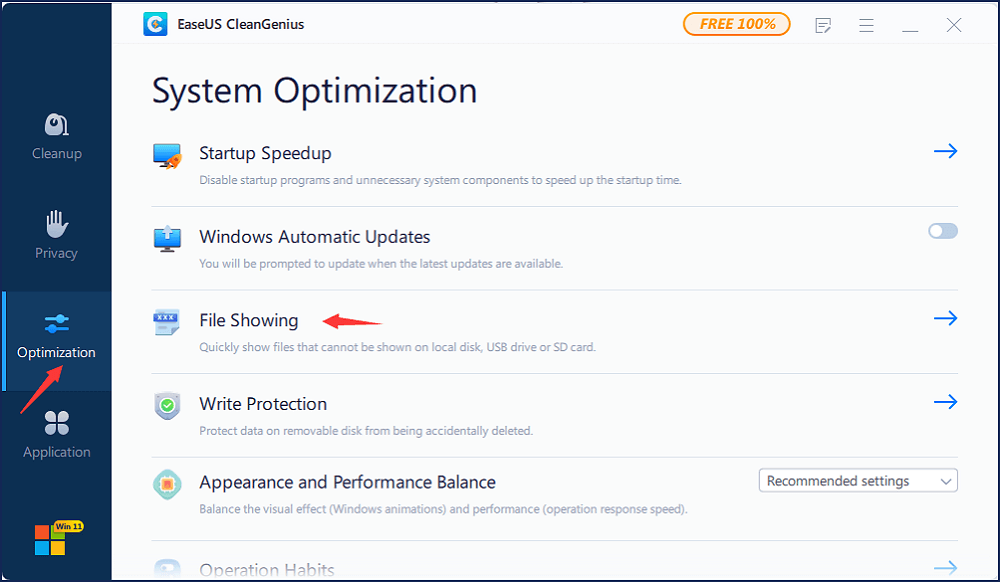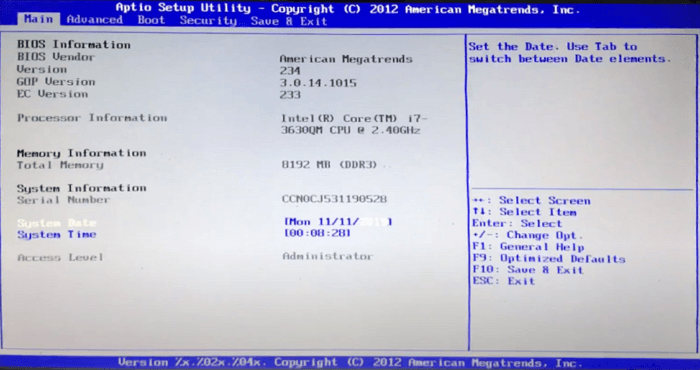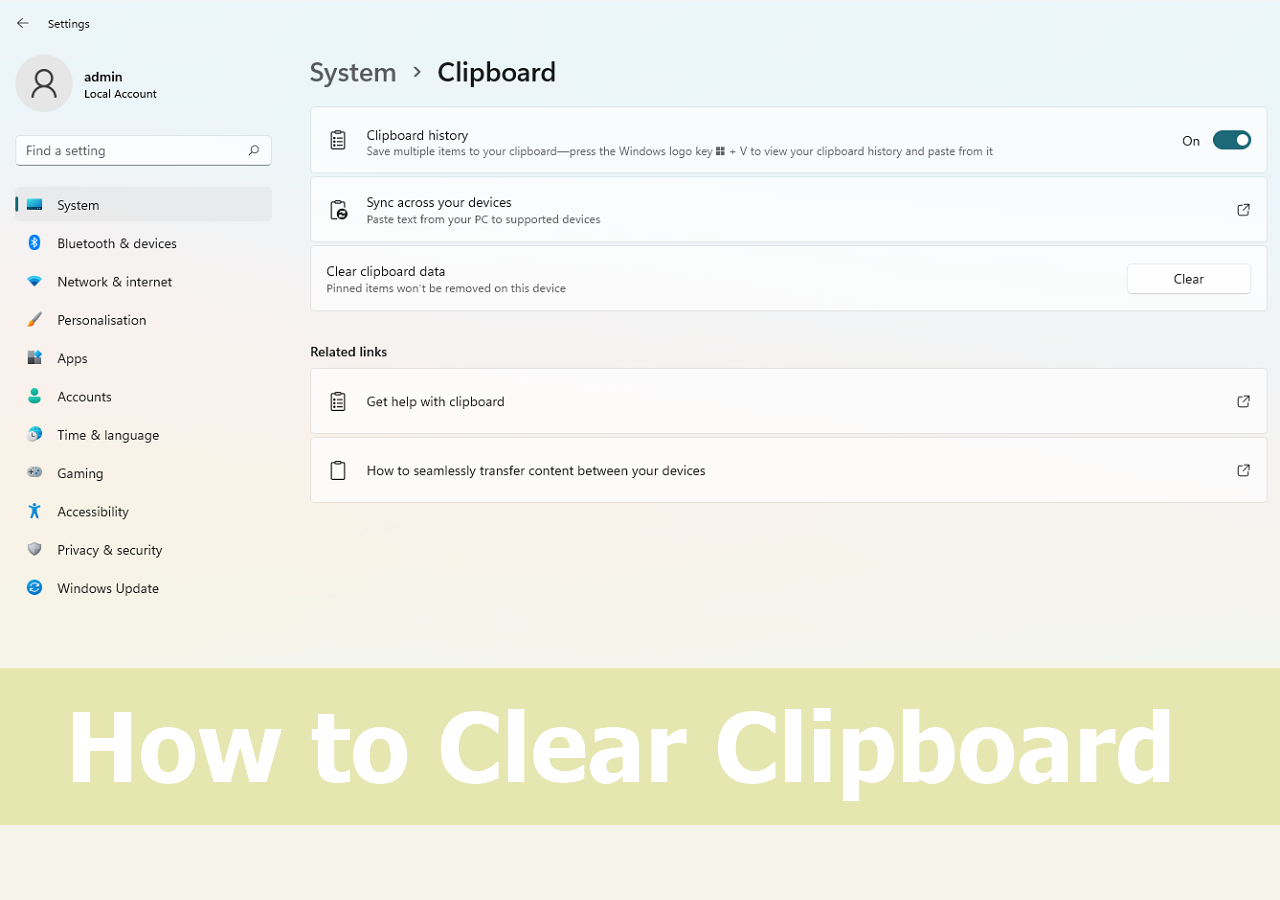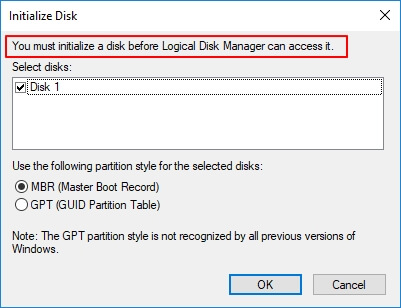-
![]() How to Reset Windows 10 Password in 4 Ways (Step-by-Step Tutorial)
How to Reset Windows 10 Password in 4 Ways (Step-by-Step Tutorial) December 12,2025
December 12,2025 6 min read
6 min read -
![]() What Is Dynamic Disk | Everything About Windows Dynamic Disk You Should Know
What Is Dynamic Disk | Everything About Windows Dynamic Disk You Should Know December 12,2025
December 12,2025 6 min read
6 min read -
![]()
-
![]()
-
![]() Fix Dell Laptop Needs the BitLocker Recovery Key [2025]
Fix Dell Laptop Needs the BitLocker Recovery Key [2025] December 12,2025
December 12,2025 6 min read
6 min read -
![]() Aptio Setup Utility Ultimate Guide | How to Access/Fix It
Aptio Setup Utility Ultimate Guide | How to Access/Fix It December 14,2025
December 14,2025 6 min read
6 min read -
![]() How to Clear Clipboard Windows 11/10 | 4 Easy Methods
How to Clear Clipboard Windows 11/10 | 4 Easy Methods December 12,2025
December 12,2025 6 min read
6 min read -
![]() Can VLC Repair MP4? Look How to Repair Corrupted MP4 Video Files Using VLC
Can VLC Repair MP4? Look How to Repair Corrupted MP4 Video Files Using VLC December 12,2025
December 12,2025 6 min read
6 min read -
![]() What Is GPT Disk? How to Recover GPT Partition Data
What Is GPT Disk? How to Recover GPT Partition Data December 12,2025
December 12,2025 6 min read
6 min read -
![]() Does Initializing a Disk Erase Data? How to Recover Data After Initializing [Full Guide]
Does Initializing a Disk Erase Data? How to Recover Data After Initializing [Full Guide] December 12,2025
December 12,2025 6 min read
6 min read
Page Table of Contents
Quick navigation on how to repair and remove bad sectors from hard disk:
| Workable Solutions | Step-by-step Troubleshooting |
|---|---|
| Procedure 1. Recover Data from Hard Disk | Launch EaseUS Data Recovery Wizard, hover on where you want to perform data recovery, and then click "Scan". Select the files you want to recover. After choosing the data, click "Recover"...Full steps |
| Procedure 2. Repair Bad Sectors Using CMD | Press the "Windows" key and type cmd. Right-click "Command Prompt" and choose "Run as administrator". In Command Prompt, enter the following command: chkdsk E: /f /r /x. If you don't want to perform the disk checking and repairing process in CMD...Full steps |
All About Bad Sectors
A sector is a subdivision of a track (a circular path on the surface of a disk) on your hard disk that stores a fixed amount of data. A bad sector is a sector that appears to be defective and won't respond to read or write operations. There are two types of bad sectors:
Physical Bad Sector (Hard Bad Sectors)
As the name indicates, physical bad sectors are caused by physical damage on the hard disk. This type of bad sector cannot be repaired using CHKDSK or any other tools. If you want to continue using a hard disk with physical bad sectors, what you can do is to use some third-party tool to block these sectors on the hard disk and prevent the system and programs from visiting them.
Logical Bad Sector (Soft Bad Sectors)
Unlike physical bad sectors, logical bad sectors generally result from software errors like a sudden shutdown of your computer and virus attacks. In most cases, the operating system will mark a sector as bad when they try to read data from the sector and find the error-correcting code doesn't match the contents of it. Fortunately, logical bad sectors can be repaired using CHKDSK.
Recover Data from the Hard Disk First
Before introducing how to remove bad sectors using CMD, we strongly suggest you recover data on your disk to another safe place first. The command line used to solve this problem will erase all data on the hard disk, completely destroy the data directory structure, and even part of the file content. In this case, it is necessary to perform data recovery in advance, and the hard drive recovery software - EaseUS Data Recovery Wizard can help.
Download this tool from the button below and follow the guide steps to recover your data.
Step 1. Select a location and start scanning
Launch EaseUS Data Recovery Wizard, hover on the partition/drive where the deleted files were stored. Click "Search for Lost Data" to find lost files.

Step 2. Select the files you want to recover
When the scanning has finished, select the deleted files you want to recover. You can click on the filter to display only the file types you want. If you remember the file name, you can also search in the search box, which is the fastest way to find the target file.

Step 3. Preview and recover deleted files
Preview the recoverable files. Then, select files you want to restore and click "Recover" to store the files at a new storage locations instead of the disk where the data was previously lost. You can choose a cloud storage, such as OneDrive, Google Drive, etc., and click "Save" to save your recovered files.

How to Repair Bad Sectors on Hard Disk Permanently Using CMD
After making sure your disk data is safe, now you can apply CMD to remove bad sectors. If there are logical bad sectors on your hard disk, you can repair them using the CHKDSK command. CHKDSK is a Windows built-in utility used to check the integrity of the disk and fix the logical errors found, including bad sectors. Being able to repair hard disk bad sectors, it is your first choice to repair a corrupted hard drive.
- Warning
- Running chkdsk can hopefully fix the hard disk issue, however, it can also result in total data loss. So, perform data recovery in advance, and then continue with the CMD method.
To permanently remove bad sector from hard disk using cmd:
Step 1. Press the "Windows" key and type cmd.
Step 2. Right-click "Command Prompt" and choose "Run as administrator".
Step 3. In Command Prompt, enter the following command: chkdsk E: /f /r /x
Notes: "E" is the drive letter of the disk you want to repair bad sectors from. The "/f" parameter tells CHKDSK to fix any errors it finds; "/r" tells it to locate the bad sectors on the drive and recover readable information; "/x" forces the drive to dismount before the process starts.
If you don't want to perform the disk checking and repairing process in CMD, you can choose to use the disk check feature, which works the same as CHKDSK.
Step 1. Open "This PC", right-click the drive that has bad sectors, and choose "Properties".
Step 2. Go to the "Tools" tab.
Step 3. Click "Check" to check and repair the bad sectors on your hard disk.

Remove Bad Sector Using Automatic Command Line Tool
Download EaseUS CleanGenius and install it on your computer. Let's start checking and refixing file system error on your device now.
Step 1. Click "File Showing" to enter the next step.

Step 2. Choose the target device and tick the box of "Check and fix file system error". Click "Execute" to start fixing the problematic device.

Step 3. When the fixing process completes, click "here" to open and use your device.

The Bottom Line
Bad sectors are sections of your computer's hard drive that have been damaged and have lost the ability to save and store your data. And any data stored in a bad sector is likely to be lost. If you cannot open your files or programs properly, it is most possible that the hard disk might have filled with bad sectors which make your data unreadable or corrupt. To make your hard disk usable, you should remove bad sectors from the hard disk using CHKDSK, which will repair the logical bad sectors and tell the system to jump over physical bad sectors.
Was this page helpful?
-
Jaden is one of the editors of EaseUS, who focuses on topics concerning PCs and Mac data recovery. Jaden is committed to enhancing professional IT knowledge and writing abilities. She is always keen on new and intelligent products.…
-
Evan Galasso is a digital forensics and data recovery engineer with over 10 years of experience in the field. He presents opinions on the current state of storage media, reverse engineering of storage systems and firmware, and electro-mechanical systems of SSDs and HDDs.…

20+
Years of experience

160+
Countries and regions

72 Million+
Downloads

4.9 +
Trustpilot Score


Free Data
Recovery Software
Recover data up to 2GB for free!













